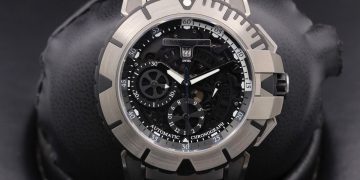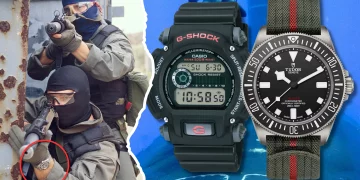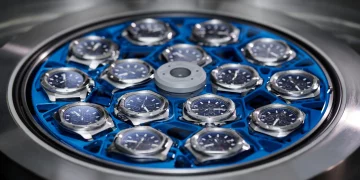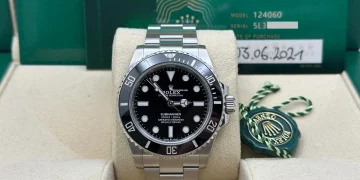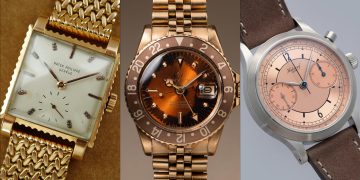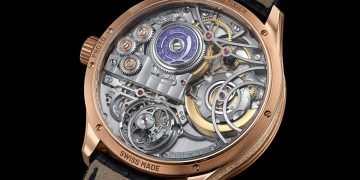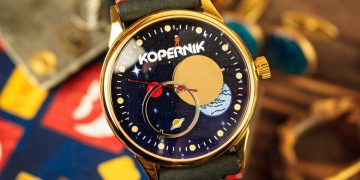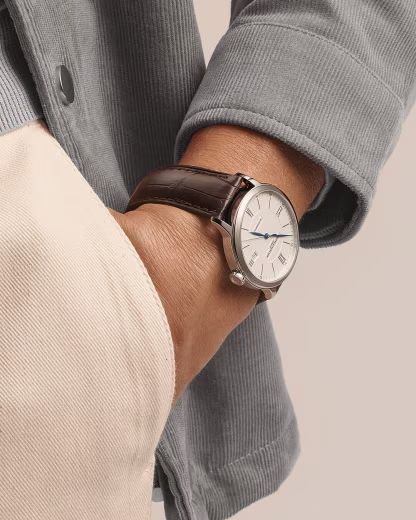High-end watches are exquisite pieces of engineering, meticulously crafted to ensure exceptional performance, longevity, and accuracy. Whether it’s a luxury mechanical movement or a sophisticated automatic watch, these timepieces are highly sensitive to external influences. While these watches are designed to be durable and resilient, there are several external factors that can significantly damage the movement over time, potentially affecting their performance or even causing irreparable damage. In this article, we will explore the external factors that pose the greatest threat to the delicate mechanics of high-end watches.
1. Magnetic Fields
a. How Magnetic Fields Affect Watch Movements
Magnetism is one of the most significant threats to the precision and reliability of a high-end watch. Magnetic fields can interfere with the movement of a mechanical watch, especially with the balance spring (or hairspring), which is one of the most sensitive parts of the movement. When exposed to a strong magnetic field, the balance spring can become magnetized, causing it to stick to itself or distort its shape. This will lead to irregular oscillation, which results in inaccurate timekeeping.
b. Common Sources of Magnetic Fields
High-end watches can be exposed to magnetic fields in everyday life, from devices such as smartphones, loudspeakers, refrigerators, television screens, and computers. Even small electronic items like credit cards, microwave ovens, and certain household appliances can generate weak magnetic fields that could potentially disrupt the watch’s accuracy.
c. Protection Against Magnetism
Many modern high-end watches, especially from well-known brands such as Rolex and Omega, offer anti-magnetic protection. These watches are designed with soft iron inner cases or special materials like Nivachron or Parachrom to shield the movement from external magnetic forces. However, for vintage or unprotected mechanical watches, magnetic exposure can still be a serious concern.
2. Shock and Impact
a. How Shocks and Impacts Can Damage the Movement
Mechanical movements are delicate and rely on finely tuned components like gears, pivots, and springs. Shocks or impacts, such as dropping the watch, hitting it against a hard surface, or sudden jolts, can disrupt the alignment of these components or cause them to bend or break. The balance wheel and escapement mechanism are especially vulnerable to such impacts, as they control the timekeeping precision of the watch.
b. Potential Long-Term Effects
Repeated exposure to shocks or impacts can gradually degrade the performance of the movement. For example, a sudden shock can cause the movement to lose its accuracy or stop working altogether. Over time, excessive shocks can also cause wear and tear on the gears, affecting the smooth functioning of the movement.
c. Shock Protection Systems
High-end watches often feature shock-resistant mechanisms to protect the movement. For example, Rolex employs the Paraflex shock absorber system, which helps to protect the movement from shock-related damage. Other luxury brands, such as Omega and Patek Philippe, use similar innovations to absorb the shock and minimize its impact on the movement.
3. Water Exposure
a. How Water Damages Watch Movements
Water is a major enemy of high-end watches, particularly those without proper water resistance. When a watch is exposed to moisture or water, it can seep into the case, causing corrosion, rust, or damage to the movement’s internal components. The mainspring, gears, and lubricants are particularly vulnerable to moisture, which can cause them to deteriorate or seize up.
b. Causes of Water Exposure
Water damage can occur from activities such as swimming, showering, or even sweating. Watches that are not properly sealed, or that have weakened seals over time, are more susceptible to water infiltration. In some cases, simply wearing a high-end watch in the rain can lead to condensation inside the case, which can be just as damaging as submerging it in water.
c. Water Resistance and Maintenance
High-end watches are often built with water-resistant properties, and many models are rated with a specific depth (e.g., 50 meters, 100 meters, or even 1000 meters) to indicate how well they can withstand water exposure. It’s important to ensure that the gaskets, crowns, and caseback seals are regularly checked and maintained, as these can degrade over time, reducing the watch’s ability to resist water.
4. Temperature Extremes
a. How Temperature Affects Watch Movements
Extreme temperatures, both hot and cold, can have a significant impact on the accuracy and longevity of a high-end watch. Heat can cause the lubricants inside the movement to break down, resulting in increased friction and wear. On the other hand, cold temperatures can cause the lubricants to thicken, which can slow down the movement or cause it to stop functioning altogether.
The balance spring is particularly sensitive to temperature fluctuations, as it can expand or contract with changes in temperature. This can lead to inaccuracies in timekeeping, especially in extreme temperature conditions. Additionally, high temperatures can cause the o-rings and gaskets to degrade, compromising the water resistance of the watch.
b. Watchmaking Materials and Temperature Sensitivity
To mitigate these effects, high-end watches often utilize special materials that are less sensitive to temperature changes, such as silicon components for the balance spring or advanced alloys for the gears. These materials help maintain the watch’s performance in a wide range of environmental conditions, though it’s always advisable to avoid exposing the watch to extreme temperatures for prolonged periods.
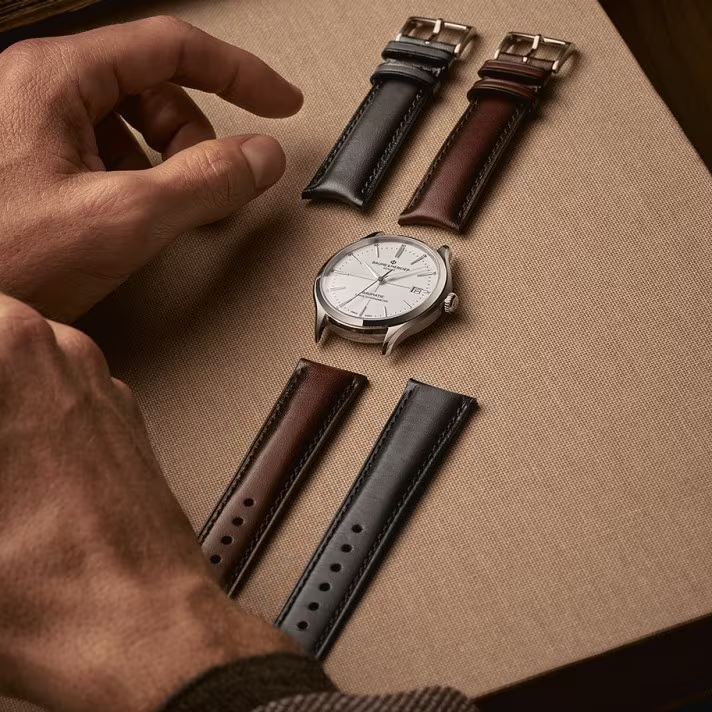
5. UV Light and Sun Exposure
a. Effects of UV Light on Watches
While not as immediately damaging as water or shock, prolonged exposure to UV light can have long-term effects on both the aesthetics and function of a high-end watch. Over time, UV rays can cause fading or discoloration of the dial, hands, or other exterior elements of the watch. Certain watch materials, such as rubber straps, leather bands, and even the luminescent paint on the hands or markers, can degrade or discolor when exposed to UV light for extended periods.
b. UV Exposure and Movement Integrity
Although UV exposure does not directly damage the internal movement of the watch, excessive sunlight and heat can contribute to the breakdown of seals and gaskets, leading to moisture or dust entering the watch. Additionally, prolonged exposure to sunlight can lead to the deterioration of the watch’s case if it is made of less durable materials, such as plastic or poorly treated metals.
6. Dust and Dirt
a. How Dust and Dirt Can Damage Watch Movements
Dust and dirt can accumulate inside a watch, especially if the seals have been compromised. Fine particles can interfere with the movement, causing friction between components, which can result in increased wear and tear or lubricant breakdown. Over time, this can reduce the watch’s accuracy and potentially damage delicate components like the gears and pivots.
b. Dust Protection Features
High-end watches are often equipped with sealed cases and gaskets to protect against dust and debris. However, over time, these seals can degrade, which is why regular maintenance is essential to ensure that the watch is protected from dirt and dust exposure.
7. Electromagnetic Interference (EMI)
a. Effects of Electromagnetic Interference on Watches
Electromagnetic interference can disrupt the functioning of an automatic or mechanical watch. Watches with digital displays or smart features are particularly susceptible to EMI, which can interfere with their electronics, causing malfunctions or inaccurate readings. Mechanical watches are less susceptible to EMI, but strong fields can still affect the balance spring, leading to reduced timekeeping accuracy.
8. Conclusion
High-end watches are precision instruments that, while incredibly durable, are vulnerable to various external factors. Magnetic fields, shocks, water exposure, temperature extremes, UV light, dust, and electromagnetic interference can all damage the delicate components inside the watch, reducing its performance or causing irreversible harm. By understanding these risks and taking precautions—such as avoiding exposure to magnetic sources, not subjecting the watch to excessive shocks, and ensuring it remains dry and well-maintained—watch owners can significantly prolong the life and functionality of their timepieces, ensuring that these masterpieces of horology remain in optimal condition for years to come.



